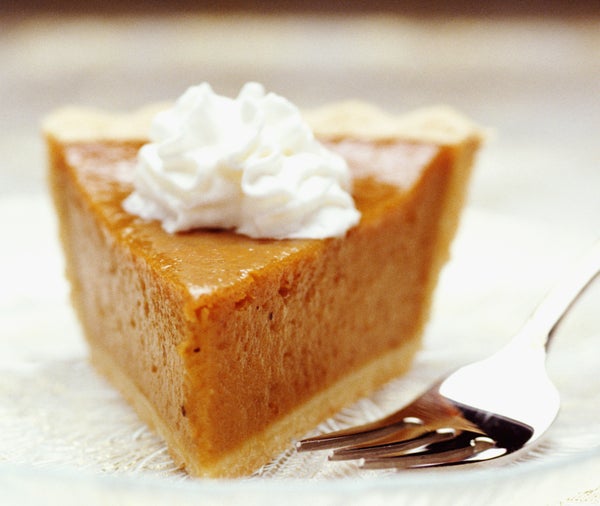This article was published in Scientific American’s former blog network and reflects the views of the author, not necessarily those of Scientific American
If you assume dogs are always ready for more food, try again. Like you, dogs make decisions about which types of food to eat. For example, if someone shows you two plates, one with a glorious piece of your favorite pie and another plate with a piece of your favorite pie with a side of carrots, many of you are going to go for the pie alone. You'd adopt a less-is-more strategy because pie plus carrots is kinda gross.
Monkeys do this too. In 2012, Kralik and colleagues found that while monkeys will eat grapes on their own and cucumbers on their own, when given the choice between a grape alone and a grape accompanied by a slice of cucumber, monkeys preferred the grape alone. It’s not that monkeys won't eat cucumbers, they’d just prefer grapes by themselves. Monkeys based their choice not on the overall quantity of the food, but instead on a qualitative decision. How about dogs?
A recent study by Kristina Pattison and Thomas Zentall of the University of Kentucky examined whether companion dogs also adopt a less-is-more strategy. The researchers first determined whether dogs had a preference between two foods, in this case carrots and cheese. Ten companion dogs—all of whom would voluntarily eat both string cheese and baby carrots—were found to prefer the cheese over the carrots (all the dogs occasionally chose carrots, suggesting that carrots are not valueless).
On supporting science journalism
If you're enjoying this article, consider supporting our award-winning journalism by subscribing. By purchasing a subscription you are helping to ensure the future of impactful stories about the discoveries and ideas shaping our world today.
But when given the choice to eat a piece of cheese on its own or a piece of cheese together with carrot, dogs chose a single piece of cheese over a piece of cheese "tainted" by the presence of carrot (except for a dog named Dakotah, who preferred the combination. You go, Dakotah. Do your thing). For the visual person in all of us, here’s a breakdown of dog preference:
.jpg?w=759)
The cheese stands alone. Almost. Credit: Julie Hecht Dog Spies
But what if these preferences are not inherent? Factors like life experiences and living conditions—such as access to food—can affect motivation and affective-based judgments. For example, monkeys who preferred the grape alone over the grape and cucumber concoction were "well provisioned" monkeys. So too are the companion dogs in the study. Would these judgments and preferences hold true under different motivational conditions or if food were scarce? Probably not. Dakotah, the one dog who preferred more, is a good example. Although he was well cared for, Dakotah had lived for many years as a stray, "fending for himself." Although no longer living in these conditions, Dakotah could be affected by his past experience with food scarcity.
For many humans, tomorrow is a day of considerable food consumption. This year, try something different: put some carrots next to the pie and see what happens!
References
